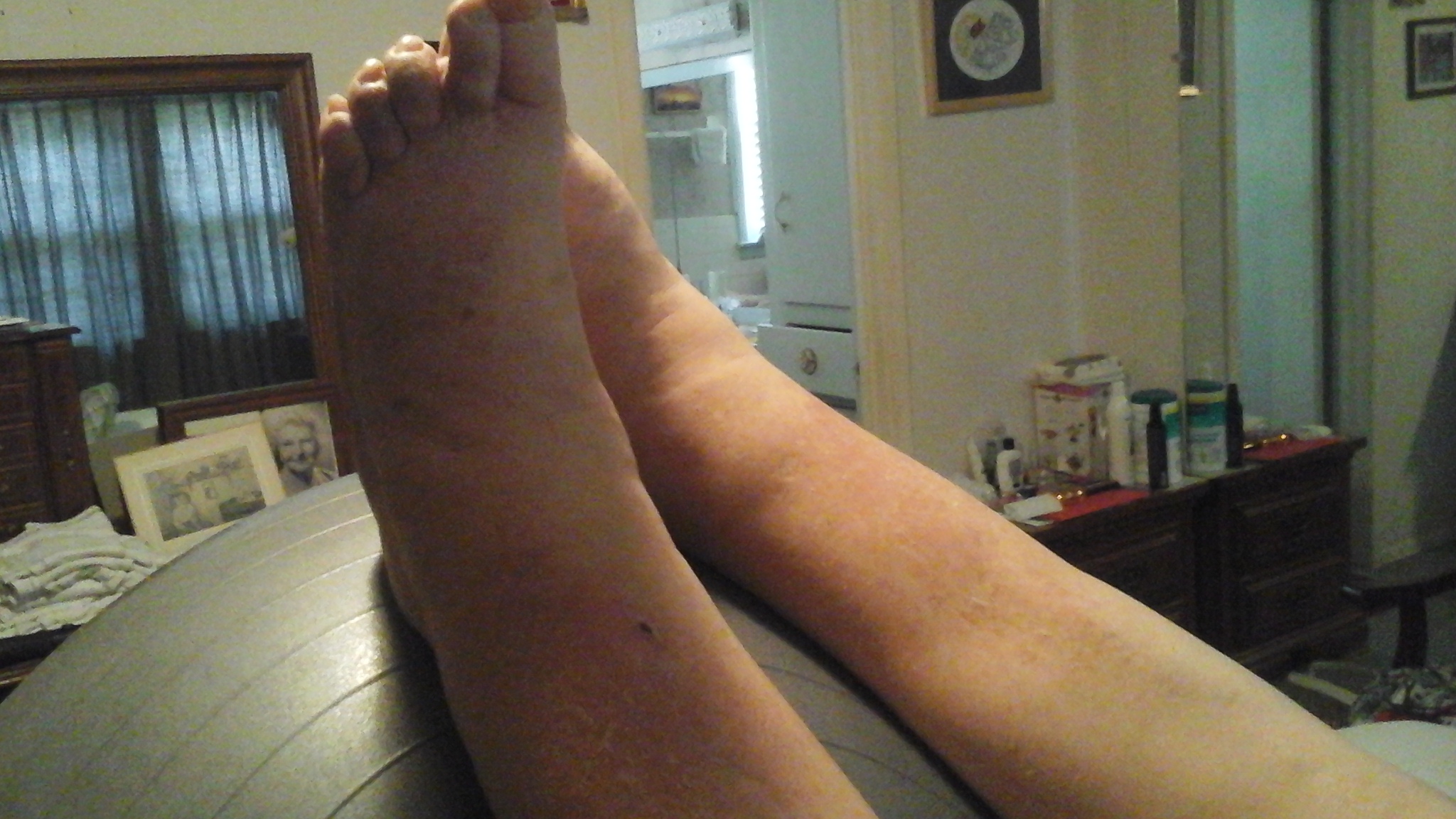
TED/Antiembolitic/Compression Socks
TED hose are very important in the healing process. Managing pain, swelling and decreasing the risk of blood clots (Deep Vein Thrombosis – DVT) are just a few reasons for loved ones to wear TED hose according to his/her doctor’s orders. However, putting compression hose on can be HORRIBLE and most caregivers are afraid of the force they are putting on their loved one’s foot/ankle to get these VERY tight stockings on.
Compression hose are available in a wide variety of colors, sizes, and heights (knee high versus thigh high). Following a surgery or heart-related complication, many doctors order and expect patients to comply with daily use of properly fit ANTI-THROMBOTIC (blood clot) HOSE. Patients complain the hose are tight, uncomfortable–especially when there are wrinkles, itching when leg hairs start to regrow, and hot–generally associated with wearing thigh-high stockings. However, the risk for blood clots and DEATH are much greater if patients do not wear the compression stockings. Consider the following scenerio:

PROCEED WITH CAUTION
Having surgery is like new road construction. As a result of new road construction(heart bypass, joint replacement), cones/barriers are placed to protect workers and re-direct traffic, lanes are narrowed, and the flow of traffic slows down and can even come to a stop! Gradually traffic starts to move more fluidly as a result of detours (re-routing), improved driver familiarity associated with the road construction site, and repairs allowing the removal of certain cones/barriers. Finally, the repairs are complete and traffic resumes with improved efficiency and smooth flow.
Now let’s tie this together. The surgical procedure (heart bypass, knee/hip replacement, etc) is symbolic to new road construction. The traffic is symbolic of the body’s circulation in response to the road construction (surgical procedure), and the cones/barriers are similar to: any precautions/restrictions the doctor orders (weight bearing, lifting, driving restrictions) as well as the side effects of surgery (pain, decreased appetite, swelling, muscle weakness, etc). Until some of the obstacles (cones/barricades) are removed, the body needs help promoting circulation so traffic does not completely stop! Therefore, patients are ordered to wear tight compression stockings–the HELP needed to promote circulation. When traffic (circulation) comes to a complete stop, accidents and traffic congestion increase exponentially. Similarly, when patients do not wear TED hose, circulation stops, swelling in the ankle/feet increase exponentially, and the congestion has an increased risk of producing a BLOOD CLOT!!!!

WARNING
Blood clots can be DEADLY. If a blood clot (essentially an internal scab) dislodges from the blood vessel walls, it is said to be thrombolytic (on the move). Blood clots that are “ON THE MOVE” are lethal if they reach the BRAIN, HEART, or LUNGS. Therefore, it is ESSENTIAL for patients to have help and wear the proper compression stockings/hose to not only improve pain and swelling but to prevent blood clots and blood clots from dislodging/traveling in the blood stream.
As stated earlier, compression stockings/hose are intended to be tight-fitting and thus VERY difficult to put on. Most patients require help to put on the hose, and most caregivers worry/dread putting on the hose! There is a simple and very CHEAP solution to putting on TED hose:
USE A PLASTIC BAG (Walmart/Target, etc.)
HERE IS A VIDEO & WRITTEN INSTRUCTIONS:
-
put the plastic grocery bag on the foot – you only need the bag to go above the ankle
-
place the TED hose over the bag and it will easily glide over the surface of the bag around the foot and ankle
-
continue to pull the hose up the leg – I like to have the hose either right under the knee or above the knee before
-
fold back the opening at the toes
-
remove the grocery bag off the foot through the opening at the toes
-
reposition the toe opening over the end of the toes for comfort.
… and Waalaah!!! You now have the hose on the leg with decreased frowning, sweating, and internal cursing!
Be sure to smooth out any wrinkles because wrinkles become uncomfortable and impede circulation (similar to putting a kink/bend in a water hose – water might flow but it’s very little) resulting in increased swelling/redness below the wrinkles!
RELATED PRODUCTS
Men
Women
Compression Sock Donner
NOTE: you can purchase a stocking donner (donner=something to help put the socks on) at your local DURABLE MEDICAL SUPPLY STORE or EBAY as well. You can only use the plastic bag technique if the hose have a toe inspection (open toe) opening.
Regardless of whether you put the hose on with a plastic bag or a purchased stocking donner, it is IMPERATIVE patients, loved ones, and clients follow all doctor orders/recommendations–including the proper use of compression stockings/TED hose to promote healing, decrease secondary risks/complications after a surgery, and optimize symptom management.
Once again, I strive to make daily care easier and safer. Therefore, please contact me with any questions, comments or ideas for future advice.
Best Regards,
Shawna PT, MPT
Thank you, thank you, thank you. This should be sent home with every patient who has to wear compression hose. Putting them on was the worse part of care after my husband’s total knee replacement.
I’m so very pleased to help. Even with those tough stocking hose. Thank you for your comment. Also, if you have a hard time gripping the socks, I use dishwashing gloves. The gloves grip the material and makes it really easy to slide the socks up the legs.